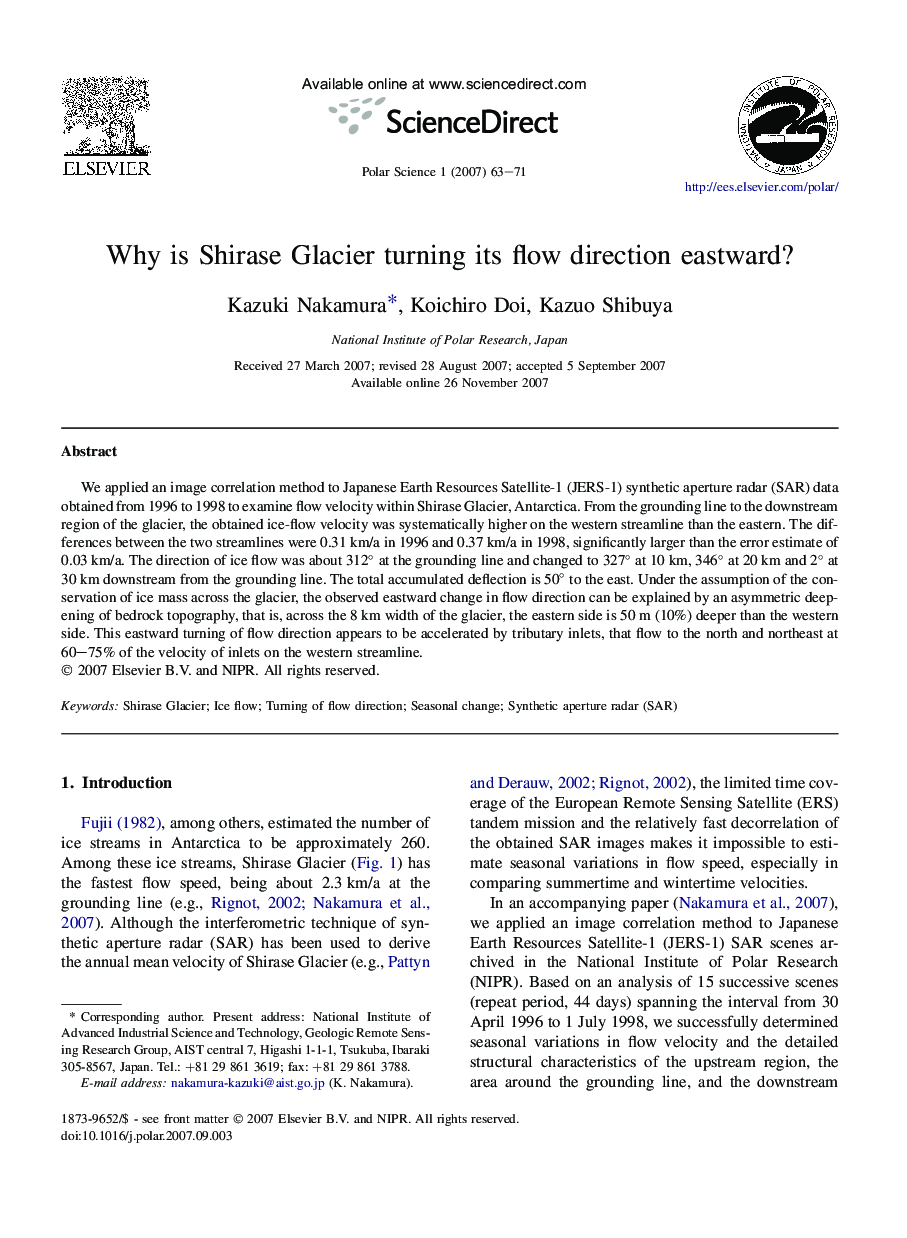| Article ID | Journal | Published Year | Pages | File Type |
|---|---|---|---|---|
| 4683364 | Polar Science | 2007 | 9 Pages |
We applied an image correlation method to Japanese Earth Resources Satellite-1 (JERS-1) synthetic aperture radar (SAR) data obtained from 1996 to 1998 to examine flow velocity within Shirase Glacier, Antarctica. From the grounding line to the downstream region of the glacier, the obtained ice-flow velocity was systematically higher on the western streamline than the eastern. The differences between the two streamlines were 0.31 km/a in 1996 and 0.37 km/a in 1998, significantly larger than the error estimate of 0.03 km/a. The direction of ice flow was about 312° at the grounding line and changed to 327° at 10 km, 346° at 20 km and 2° at 30 km downstream from the grounding line. The total accumulated deflection is 50° to the east. Under the assumption of the conservation of ice mass across the glacier, the observed eastward change in flow direction can be explained by an asymmetric deepening of bedrock topography, that is, across the 8 km width of the glacier, the eastern side is 50 m (10%) deeper than the western side. This eastward turning of flow direction appears to be accelerated by tributary inlets, that flow to the north and northeast at 60–75% of the velocity of inlets on the western streamline.
